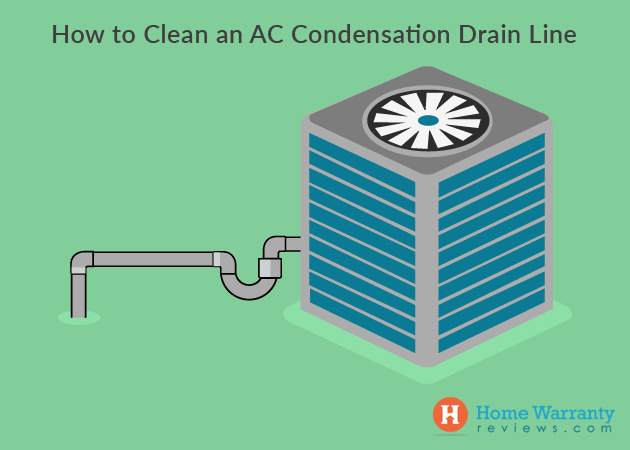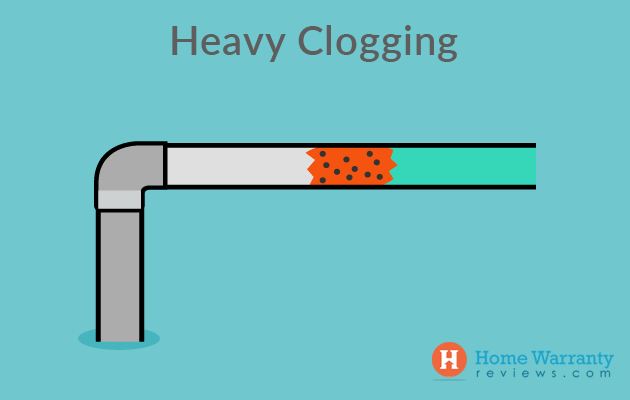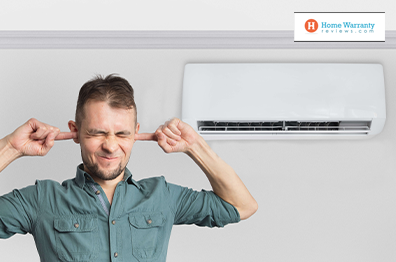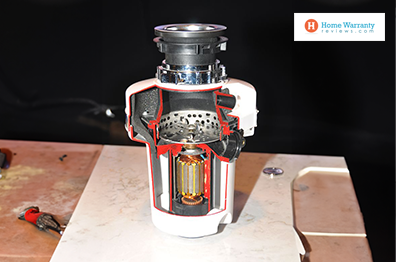How to Clean an AC Condensation Drain Line?
Fully functional air conditioners have become a part of our day to day life. This is especially since artificial cooling and heating are both essential to the extreme weather conditions across the country. Acting both as a temperature regulator as well as a way to purify and control the air quality indoors, air conditioning units are no longer a luxury item. AC condensation drain cleaning is equally important, read this article to know why.
A badly maintained unit is a serious cause for concern. From simple issues like temperature imbalance to faulty purifiers and humidity control, damaged or unkempt air conditioners can be both annoying and unhealthy.

From timely combing out of the mats to cleaning out the accumulated crud at the edge of the filter, keeping brushes, foam cleaners and disinfectants handy is the first step to keeping your air conditioning unit squeaky clean. Attention to detail is key. This is due to the units being made up of small components. Each one collects dust and lint constantly as air passes through.
Besides the basic DIY, it is also important to have a routine servicing done. Leave the servicing of the fan motor and internal purifiers to the professionals.
One of the often ignored parts of any air conditioning unit is the condensation drain line. It is, however, a component that is crucial to the smooth functioning of the unit. The condensation drain line channels excess moisture from the air conditioner and room out of the house. The moisture is produced by the air conditioner’s evaporator coil. This can cause extreme humidity problems if not regulated properly. This is why it becomes very important to keep the condensation drain line properly clean at all times, else the water build-up might damage the internal workings of the air conditioning unit.
It’s not only the functioning of the unit that is at stake though, increased moisture in the room can lead to discoloration and damage of walls and carpeting, respiratory issues, residue on linen and fabric and a heightened threat of mold and mildew.
Why Does the AC Condensation Drain Line Get Clogged?
Since it is constantly in direct contact with water, the drain line inevitably gathers algae and mold inside, causing a blockage if not treated for a long time. A prolonged neglect of the drain line can lead to mold and mildew intensifying in the drain line, which is after all only a narrow pipe, choked by the spread of fungi. Ultimately, this creates a clog in the drain.
This obstruction is formed because the algae and fungus thrive in the damp air of the drain pipe, which sees a slow but steady trickle of water. That being said, the water flowing through the drain is enough to allow the algae to form but does not have the pressure necessary to prevent continued algal growth.
How to Tell if the Condensation Drain Line is Clogged?
Water that doesn’t get drained out properly will drip from other parts of the Air Conditioner, and may even affect its functioning. From musty smell in the concerned room to pools of water collecting around the pipes of the unit, the air conditioner will give you signs to diagnose the problem without trouble.
You could also check the draining pan if your unit has one. It might have water that is stagnant, or it might be overflowing. They could both be indications of malfunctions with the condensate drainage system.
Many modern Air Conditioner units have an in-built cut-off switch that shuts down the Air Conditioner in the event of a clogged drain line. This is to prevent the later problems that result from an excess of wastewater building up in the Air Conditioner, but it is not a solution to the clog itself. So if your Air Conditioner seems to have stopped working for no apparent reason or you have exhausted all the other causes for a possible malfunction, then it’s time to check the drain line.
Cleaning a Minor Blockage in the Air Conditioner Condensation Drain line: Bleach vs Vinegar
There are multiple ways in which the drain line can be cleaned. This can be done using materials right at home. In the event that there is no clog yet, but algae is likely already forming, bleach or vinegar may be used to clear the algae out of the drain and sanitize the insides of the pipe for at least a few weeks. The liquid is to be poured in at the access point on the drain line, which is a capped T-shaped vent. Open this cap and pour in a slow, steady stream of a quarter cup of vinegar or bleach. If your conditioning unit is utilized steadily throughout the year, then it is recommended that this process is repeated every couple of months for optimum results.
By and large, bleach and vinegar perform the same function on the growing mold, but they may have different side effects on the rest of the Air Conditioner unit. In the summer months, it is one and the same, because the chemicals are safely flushed out by the water or condensate that travels through the drain pipe. However, during the cooler months, when you are less likely to need the system, the drain pipe is likely to be dry from lack of use. Pouring bleach into this without flushing it away with water would result in the bleach eating away at the pipe. Even the surrounding material of the Air Conditioner unit. Distilled vinegar would not have this corrosive effect, but it takes longer to destroy the algae than bleach. The larger the algae growth, the more time it will take to clean out the drain pipe with vinegar.
Further, bleach is also lethal for plants and can cause rashes on the skin as well. So if your drain line empties out onto a flower garden or anything that would be damaged by contact with bleach. It will be adversely affected by the process of cleaning the Air Conditioner drain line. This would only add another problem to the equation.
Unclogging the Air Conditioner Condensation Drain line: How to Find the Blockage
Where there is a developed blockage in the drain line, the clog and dirt might be too heavy to remove with bleach or vinegar. There are other ways to deal with this sort of situation, the precise steps of which are detailed below.
Step 1
Turn off your air conditioning or HVAC (Heating, Ventilation and Air Conditioning) system. To make sure that no residual charge is running through it, always switch off the thermostat as well as the main power.
Step 2
Locate the condensate pan of your Air Conditioner system. This pan collects the condensation which is poured out by the drain line. Most of the time, the pan is indoors, along with the air handler in an attic, storeroom or closet etc. The drain pan is usually located under the unit. It may be covered by a detachable access panel. Check if the pan is not immediately visible.
Step 3
Check for stagnant water in the drain pan. This means that your drain line has not poured in new condensate water for a long time, and probably clogged. The condensate drain line is cracked or leaking if the drain pipe is overflowing. This should be sealed or simply replaced. Alternatively, if the drain line is intact, then the air filters might be clogged with dirt, in which case they should be replaced.
It’s a good practice to replace the air filters regularly, but if it seems that the drain line is clogged, continue to follow the remaining steps below.
Step 4
To clean the drain pan, you can use a wet and dry vacuum cleaner. Do not use your hands or soap as stagnant water may be infected. Instead, apply rags to soak up the water, and use the wet and dry vacuum to remove the excess moisture. After this, you can clean the drain pan with soap.
Partial Clogging
For small clogs, it’s often possible to just directly remove the blockage manually. When blockage breaks and falls further down the drain pipe, it can be rinsed out. However, it should be noted that this approach is only suited for minor clogs.
For more stubborn blockages and if your condensate line is wide enough, you can use a plumber’s snake. Insert the free end into the pipe and move it around until you can feel your way through the pipe and to the blockage. Then, push and scrape the blockage out of the pipe.
Additionally, you should always apply the bleach or vinegar rinse described above after any unclogging procedure, so that the remaining debris does not start growing again and the drain is disinfected.
Heavy Clogging

The fastest and most efficient way to clear more heavily clogged drains is with suction. Use the wet and dry vacuum here. This may not work well for a narrow drain line.
Try to use it and narrow the focus of the suction with your hands as much as possible. The vacuum may not prove to be completely effective in this manner. Use it to pull the blockage out of the drain opening which is usually located outside the house. Check the canister attached to your wet and dry vacuum to make sure the clog was removed.
Use an air compressor if you do not have a wet and dry vacuum. However, the vacuum is the safer option as the air compressor can damage your drain pipe if used incorrectly. Position the air compressor at the center of the drain pipe and not pointed toward the sides.
Use specialized products to clear blockages in drain lines. This is necessary if the drain line is hard to reach with a wet and dry vacuum or a compressor. Essentially, these condensate drain pumps are similar to bicycle pumps, but with two hoses. One to suck out the clog, and the other to expel the blockage.
Cleaning up After
This is a messy and tedious process, so you want to make sure you don’t have to do it again. Use disinfectants in the drain and to the tray.
You should mask the odor which may emerge from the pipe or the Air Conditioner. Slowly burn away and flush the dirt or mold when you add some hydrogen peroxide to it. The peroxide not only handles the smells but also acts as an oxidizing agent that keeps away unwanted growth. You could even use a hot water and liquid dish soap mixture. But we do strongly recommend the peroxide at least once in a while.
Once the peroxide has been poured in wait for 30 minutes. After that, flush the liquids out of the pipe with water. Remember to ask someone to check outside and see whether the pipe is expelling water unhindered.
Considering a Home Warranty
It can be quite a lot of work to clean the drain line on your own and this could only get worse if you are out of warranty. Do some research, determine the best home warranty and consider it to keep your home in prime condition. Get all the information from the No.1 Consumer Research website on home warranties. Read through some of the reviews on home warranty companies that could interest you.
We’d love to hear from you if you have any doubts on which home warranty to choose. All the best companies have been recognized by us every year and you can determine which home warranty to select from those home warranty companies that are awarded.
How to Clean an AC Condensation Drain Line?
Over time algae, mold, and mildew can build up inside the condensation drain line and form a clog, causing water to back up and overflow inside the air conditioner unit. If the condensation line is clogged, you will need to use a shop vac or special pump to remove the clog from the line.
What is a condensate drain line?
The condensate line is one of the most important components of your HVAC system. Your condensate line, also known as a “condensate drain line” or “condensate drain” does several jobs, but none are more critical to the functionality of your appliance than draining excess moisture outside of your home.
Is bleach or vinegar better for AC drain line?
Bleach vapor can be harmful if it is inhaled, whereas vinegar is more annoying than a danger. Vinegar is definitely the easier of the two to rinse out of the drain line. Bleach should not be used for drain lines that are made of PVC or ABS plastic.
How do you unclog an AC condensation line?
To prevent this from happening, pour a cup of bleach in the access opening in the drain line near the AC unit to kill any algae, mold, or mildew that has formed in the pipe. If the condensation line is clogged, you will need to use a shop vac or special pump to remove the clog from the line.
RECENT ARTICLES
 Home Warranty 101: How Does A Home Warranty Work And What Should You Know About Them
Home Warranty 101: How Does A Home Warranty Work And What Should You Know About Them





